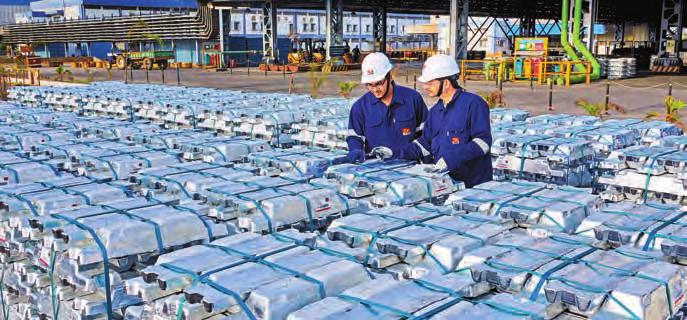Agriculture has been the backbone of India’s economy for centuries. It provides support to over43 per cent country’s workforce and contributed around 18 per cent to its GDP. However, the current model of farming in Indiafocusses excessivelyon the use of chemical fertilizers, pesticides, and water. This has led to soil degradation, water scarcity, and declining crop yields. Regenerative agriculture offers a promising alternative that not only addresses these challenges but also enhances the health of the ecosystem, ensuring long-term sustainability.
What is Regenerative Agriculture
Regenerative agriculture is a farming approach that aims to restore soil health and enhance biodiversity. The problem with conventional farming is that it focuses solely on maximizing short-term yields. Regenerative agriculture, on the other hand,focusses on practices like minimal soil disturbance, cover cropping, crop rotation, and agroforestry, etc. These methods not only improve soil fertility but also increase the resilience of the land against extreme weather events and reduce its dependency on external inputs.
Regenerative agriculture presents an opportunity for Indian farming to transform itself. It offers a sustainable pathway to address the challenges of modern agriculture and mitigate climate change.
However, realizing its full potential will require concerted efforts from the government, private sector, academia, and farmers themselves.
Regenerative Agriculture and India
In recent years the Indian government has begun to embrace regenerative agriculture as a response to the environmental and economic challenges posed by conventional farming practices.In 2015, the government launched the Paramparagat Krishi Vikas Yojana (PKVY) program to promote organic farming practices that align with regenerative principles. States like Andhra Pradesh have pioneered Zero Budget Natural Farming (ZBNF), which has gained international recognition.
On the private sector end, organisations like the Indian Council of Agricultural Research are promoting awareness and training farmers in regenerative practices. Another good example is Diageo, who, under its regenerative agriculture program,has partnered with local organisations to equip smallholder farmers with best practices, knowledge, and tools to transform agricultural practices.
Not just that, many startups in India are leveraging technology to facilitate regenerative practices. For instance, there are now soil sensors and AI-driven tools that are helping farmers optimize their resources and monitor health of the soil.
Adopting Regenerative Agriculture: Challenges
Despite its potential, regenerative agriculture faces several barriers in India. Many farmers lack knowledge of regenerative practices and their long-term benefits. Coupled with that is the resistance to change that further hinder adoption of regenerative agricultural practices.For instance, farmers accustomed to chemical-intensive farming may perceive regenerative methods as risky and less effective, especially if they don’t see any immediate results. Here are some other challengesin adopting regenerative agriculture in India:
Investment: Switching to regenerative agriculture can be expensive in the beginning, especially for small farmers. There are many costs involved in the process including training and purchasing new equipment. There’s also a risk of potential reductions in the yield during the transition period. That is why many farmersfind it difficult to bear these costs without financial assistance.
Government Support: While there are some government programs that support sustainable practices, the country still lacks a comprehensive policy for regenerative agriculture. Also, the subsidies that exist currently often favour conventional inputs like fertilizers and pesticides, creating a financial disincentive for farmers to shift to regenerative methods.
Infrastructure and Resource Constraints: Regenerative agriculture requires access to resources like diverse seeds, organic matter for composting, and training infrastructure. In remote or resource-scarce regions, the lack of such support systems makes it challenging for farmers to adopt and sustain these practices.
Challenges in Scaling: While small-scale regenerative projects have shown success, scaling these practices across India’s diverse agricultural landscape requires significant coordination among the different stakeholders like the government bodies, private entities, and farming communities.
What is in the Future for Regenerative Agriculture in India
The future of regenerative agriculture in India holds immense promise. Over 30 per cent of India’s soil classified as degraded. Regenerative practices can help restore the fertility in the soil and enhance yield in the long run. Also, by reducing regenerative agriculture can lower costs for farmersdependency on expensive chemical inputs.
As India progresses towards its sustainability goals, regenerative agriculture is likely to feature prominently in national strategies like the National Mission for Sustainable Agriculture (NMSA).With the right investments in education, infrastructure, and policy, regenerative agriculture can not only secure India’s food systems but also set an example for the world in sustainable farming.















.jpg)




